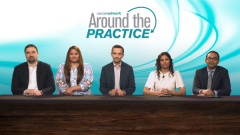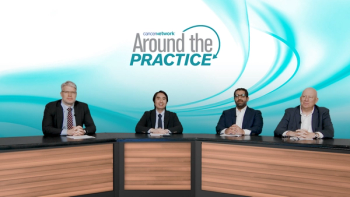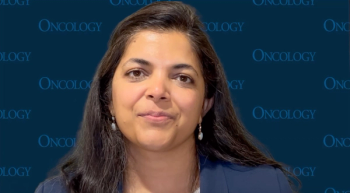
Optimal Sequencing Strategies With Bispecifics in R/R MM
Panelists discuss how optimal sequencing strategies suggest using chimeric antigen receptor (CAR) T-cell therapy first when eligible, followed by switching targets (from B-cell maturation antigen [BCMA] to GPRC5D) upon relapse rather than staying with the same target, while acknowledging that sequential bispecific use may be challenging due to T-cell exhaustion and recommending “sandwiching” T-cell sparing agents like cereblon E3 ligase modulators (CELMoDs) between bispecifics to allow T-cell recovery. However, they note that monthly dosing schedules and treatment holidays may change these dynamics in the future.
Episodes in this series

Optimal Sequencing Strategies with Bispecifics in Relapsed/Refractory Multiple Myeloma (R/R MM)
Sequencing strategies for bispecific antibodies and cellular therapies represent a critical consideration in modern multiple myeloma management. Current evidence suggests that administering bispecific antibodies after CAR T-cell therapy is feasible and effective, whereas the reverse sequence (CAR T after bispecifics) may be more challenging due to potential T-cell dysfunction. The consensus approach favors offering CAR T as early as possible when patients are eligible, followed by bispecific antibodies upon relapse. Antibody-drug conjugates are generally reserved for later lines after both CAR T and bispecific therapies, although this sequencing paradigm may evolve as monthly dosing schedules become standard and treatment-free intervals become possible.
Target switching represents the preferred strategy when patients relapse after BCMA-directed therapy. Following BCMA CAR T-cell therapy, experts generally recommend switching to GPRC5D-targeted bispecifics rather than BCMA bispecifics, based on known resistance mechanisms, including antigen shedding and point mutations that can affect target binding. However, this preference is not absolute, particularly for patients experiencing long progression-free intervals, where rechallenging the BCMA target may be reasonable. Current data suggest reduced efficacy when BCMA bispecifics are used after prior BCMA exposure, with progression-free survival decreasing from approximately 12 months to 4 months, although this may be confounded by patient selection factors.
Sequential bispecific use presents unique challenges due to T-cell exhaustion and dysfunction from continuous T-cell engagement. The strategy of using one bispecific immediately after another is discouraged without intervening therapy. Instead, experts recommend “sandwiching” T-cell sparing agents between bispecific therapies, such as CELMoDs, selinexor combinations, or other oral regimens that allow T-cell recovery. This approach aims to restore T-cell function before reengaging with subsequent T-cell–directing therapies. Emerging combination strategies and ongoing clinical trials may provide additional insights into optimal sequencing, but current practice emphasizes preserving T-cell function while maximizing the benefit from each therapeutic class.
Newsletter
Stay up to date on recent advances in the multidisciplinary approach to cancer.















































































